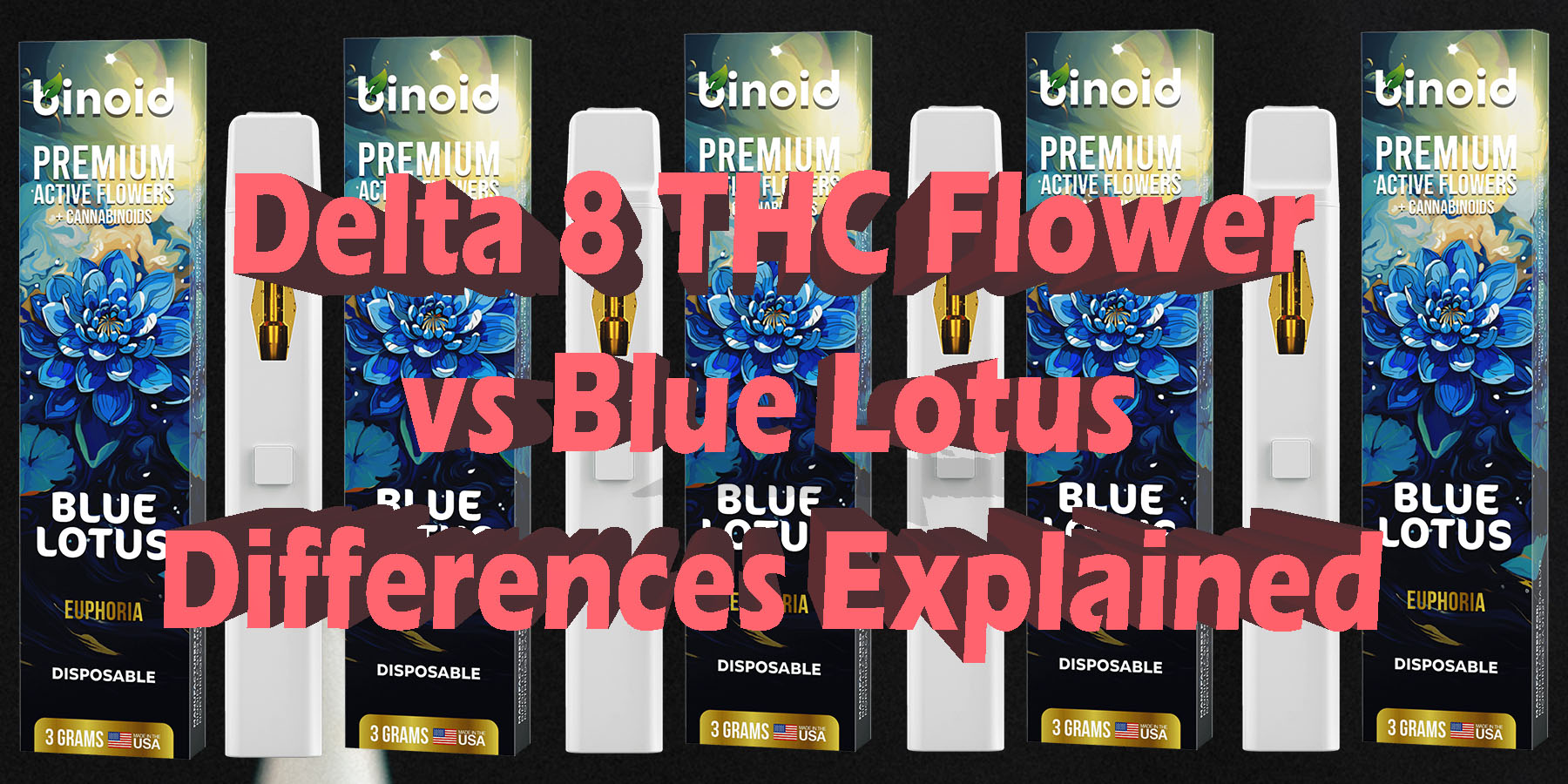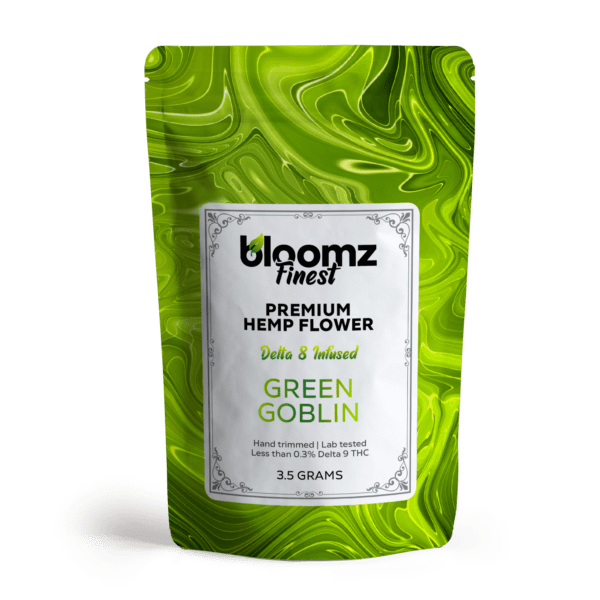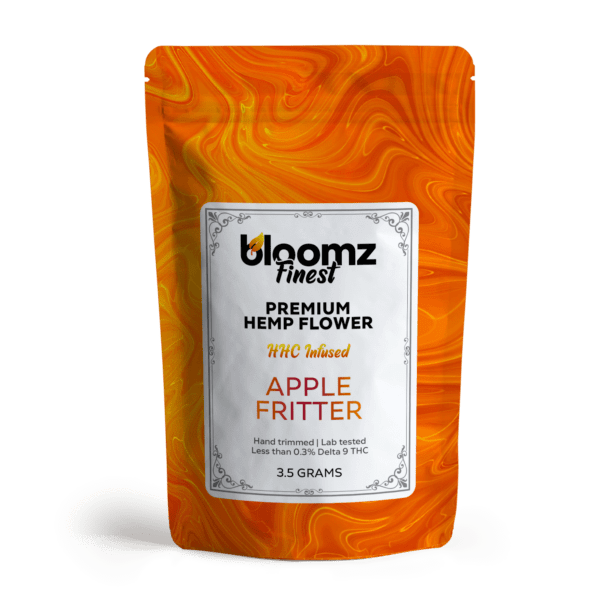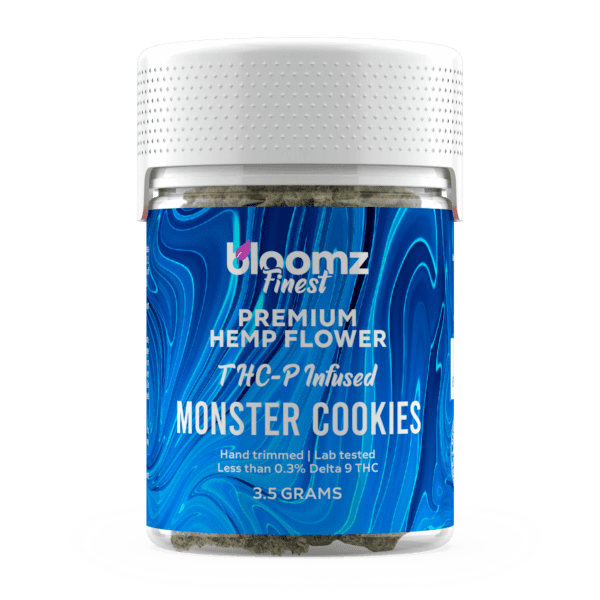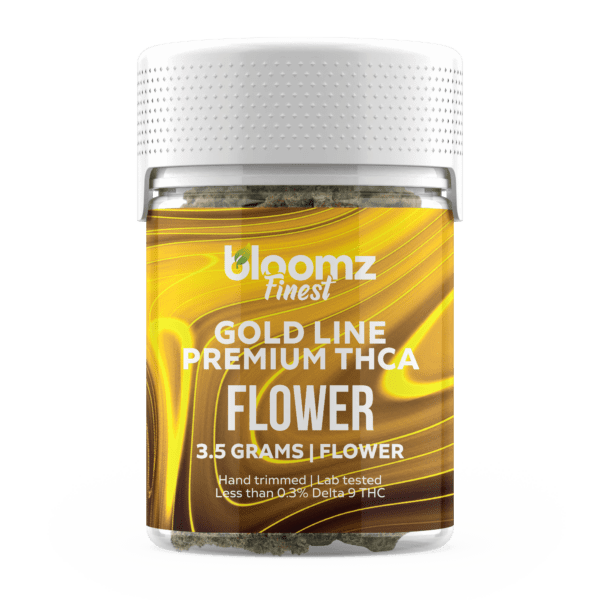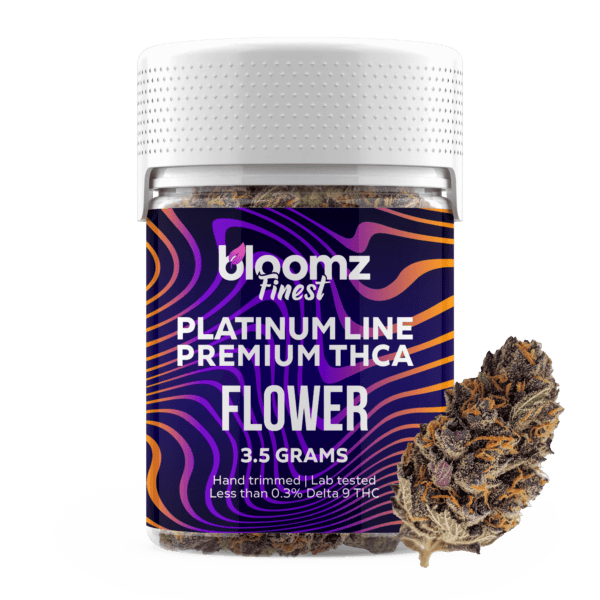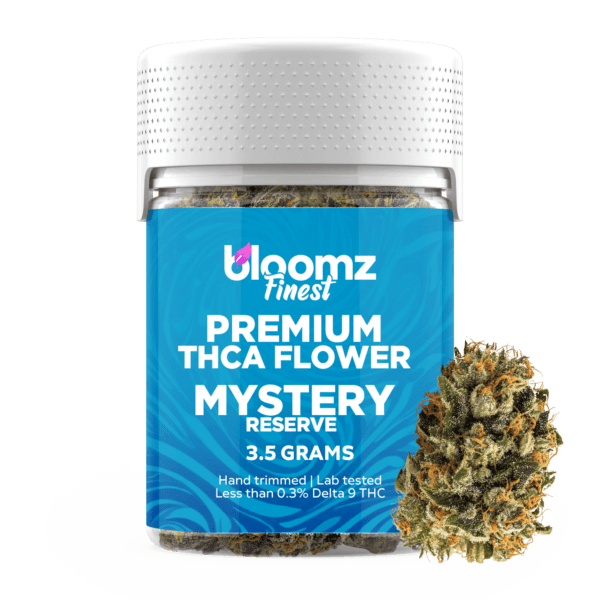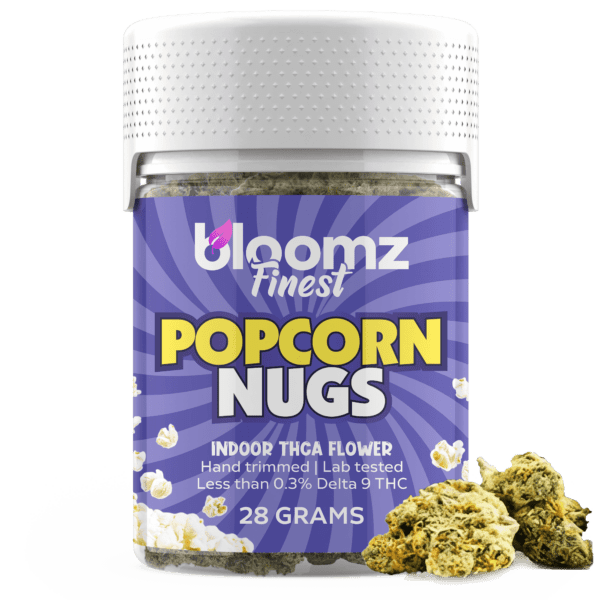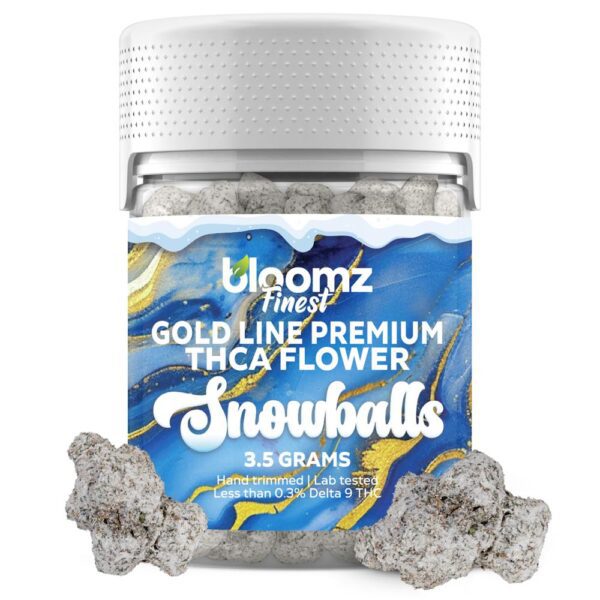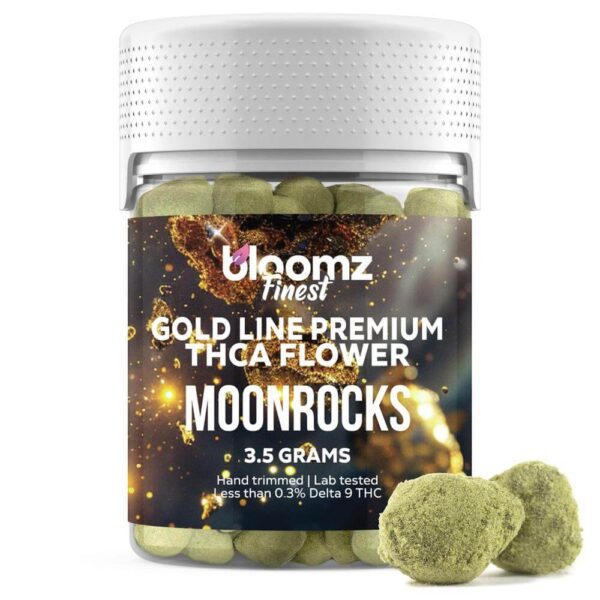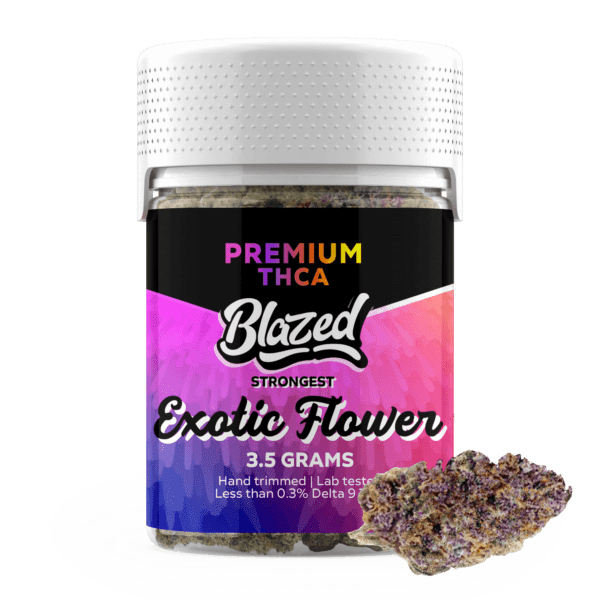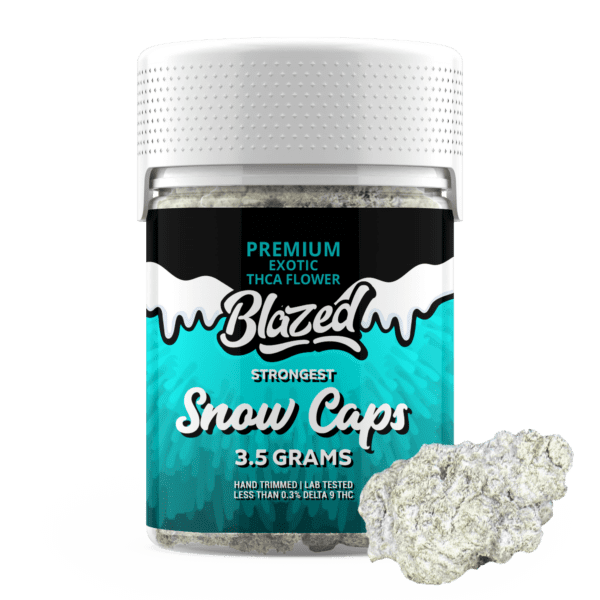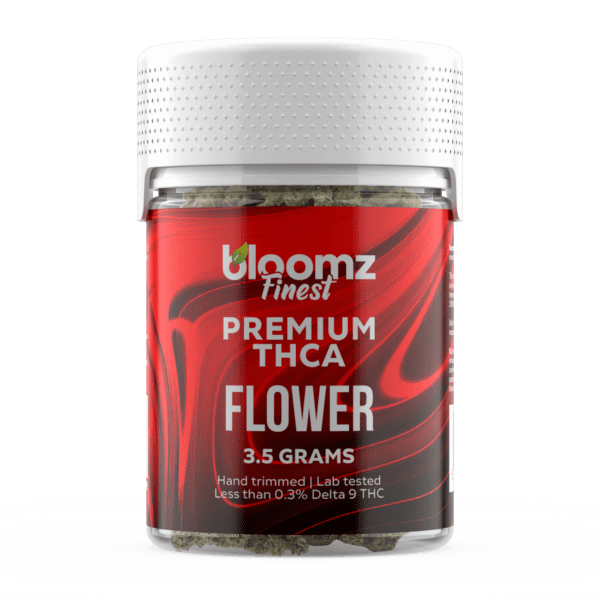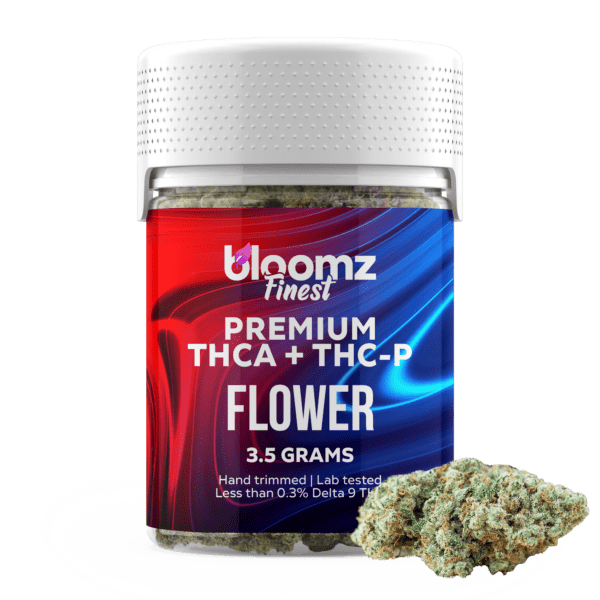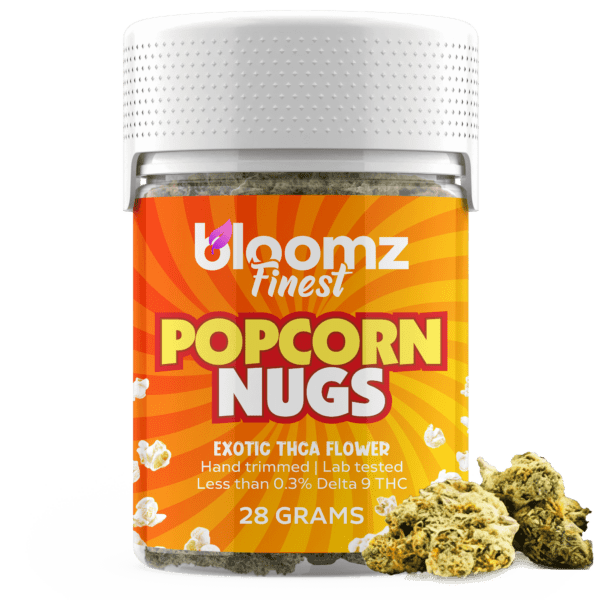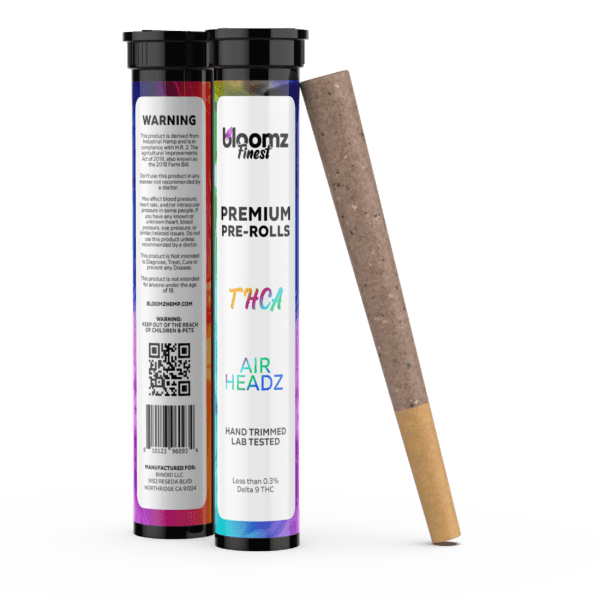In the vast and ever-unfurling tapestry of botanicals available to the modern explorer, two particularly intriguing options present themselves, each offering a distinct key to unlocking different doors of perception and relaxation. One is a product of contemporary chemical artistry, a testament to scientific ingenuity that isolates a gentle cannabinoid and infuses it into a natural vessel. The other is a whisper from the dawn of civilization, a sacred flower steeped in millennia of ritual and reverence, its petals holding the secrets of ancient pharaohs. This is the fascinating crossroads where modern innovation meets timeless tradition.
The journey through this landscape requires a discerning eye, an understanding that these two contenders, while both offering a departure from the mundane, travel along entirely different experiential pathways. Choosing between them is not simply a matter of preference but an intentional selection of the kind of journey one wishes to embark upon.
TO BUY DELTA 8 THC FLOWER CLICK HERE
Recommended products
Why It’s Important to Breakdown the Matchup of Delta 8 THC Flower vs. Blue Lotus
In an era saturated with wellness options and botanical products, making an informed choice can feel like navigating a dense, uncharted jungle. The sheer variety, coupled with nuanced differences in chemistry and legality, necessitates a clear and comprehensive guide. Breaking down the comparison between Delta 8 THC Flower and Blue Lotus is an essential act of clarification, designed to empower the consumer with the knowledge needed to select the product that truly aligns with their personal intentions and expectations.
This detailed examination is not about crowning a champion, but about illuminating the unique character, origin, and experiential profile of each contender. By dissecting their core components, from their active compounds to their cultural significance, we provide a reliable compass for those who are venturing into this exciting territory, ensuring a journey that is both safe and deeply satisfying.
Here are the primary reasons why a thorough breakdown of this matchup is so crucial:
Distinguishing Between Natural and Infused Products: This is perhaps the most fundamental reason for a detailed comparison. Blue Lotus is consumed in a form that is very close to its natural state—its dried petals and flowers contain the active alkaloids that produce its effects. Delta 8 THC Flower, conversely, is a manufactured product. It begins as legally compliant hemp flower (rich in CBD or CBG) that is then infused, coated, or sprayed with a Delta 8 THC distillate, which itself is typically synthesized from CBD. Understanding this distinction is critical: one is a product of nature, the other a product of a multi-step industrial and chemical process. This difference impacts everything from the user’s philosophical approach to botanicals to practical considerations about product quality, consistency, and the potential for residual solvents from the manufacturing process.
Clarifying Vastly Different Psychoactive Experiences: While both are considered psychoactive, the nature, intensity, and quality of the experiences they offer are worlds apart. Delta 8 THC provides a tangible, albeit milder, version of the classic cannabis high. It binds to the body’s CB1 receptors, producing a clear-headed euphoria, a noticeable body buzz, and a distinct shift in perception. The effects are reliable and generally follow a predictable pattern. Blue Lotus, on the other hand, works through its alkaloids, apomorphine and nuciferine, which interact with the body’s dopamine system. The result is a much more subtle, dreamy, and ethereal state of being—a gentle psychoactivity characterized by tranquility and mental quietude rather than overt intoxication. A direct comparison prevents users from expecting a potent “high” from Blue Lotus or a subtle, meditative state from Delta 8 THC.
Navigating Two Unique and Contentious Legal Landscapes: The legal status of both products is complex and warrants careful explanation. Delta 8 THC’s legality is derived from the 2018 Farm Bill, which legalized hemp and its derivatives. However, because it is typically created by chemically converting CBD, the U.S. Drug Enforcement Administration (DEA) has suggested it may be a “synthetically derived” and therefore illegal substance. This has led to a contentious legal environment where many individual states have explicitly banned or heavily regulated Delta 8 products. Blue Lotus, conversely, is federally unregulated and legal in most of the country, its status stemming from a long history of being outside the purview of controlled substance laws. The major exception is Louisiana. Understanding these separate and challenging legal frameworks is essential for any consumer wishing to partake responsibly and legally.
Appreciating Different Origins: Modern Lab vs. Ancient Temple: The stories behind these two contenders could not be more different, and this context deeply enriches the user’s experience. Delta 8 THC is a child of the modern cannabinoid boom, its existence a direct result of scientific exploration into the minor cannabinoids found within the cannabis plant and the legal opportunities created by the 2018 Farm Bill. Its history is being written in laboratories and legislative sessions right now. Blue Lotus is an ancient soul, a sacred botanical with a history stretching back more than 3,000 years to the heart of Pharaonic Egypt. It was a central element in religious ceremony, a symbol of creation, and a revered tool for achieving spiritual states. Choosing one is not just choosing an effect; it is choosing to engage with either cutting-edge science or ancient tradition.
Promoting Safe and Intentional Consumption: A detailed breakdown is the cornerstone of responsible use. By understanding the typical potency, duration, and nature of the effects of both Delta 8 THC Flower and Blue Lotus, individuals can make choices that are appropriate for their tolerance, setting, and desired outcome. Knowledge about the manufacturing process of Delta 8 flower encourages consumers to seek out reputable brands that provide comprehensive, third-party lab testing to ensure product purity and safety. Similarly, understanding the subtle nature of Blue Lotus encourages a more mindful and patient approach to consumption. This level of informed decision-making fosters a respectful and beneficial relationship with these powerful botanicals.
Recommended products
Contender #1: Delta 8 THC Flower
Emerging from the nexus of agricultural hemp and sophisticated laboratory science, Delta 8 THC flower has carved out a unique and popular niche in the expansive cannabinoid market. It represents a novel approach to achieving a cannabis-like experience, offering a middle ground for those who find the intensity of traditional Delta 9 THC to be overwhelming. This contender is not a naturally occurring, high-potency flower but rather a cleverly crafted product, born from the legal framework of the 2018 Farm Bill.
It begins its life as humble, non-intoxicating hemp and is transformed through a scientific process into something capable of producing a clear, functional, and blissful euphoria. For a vast number of consumers, Delta 8 THC flower is the perfect solution: a legally accessible way to enjoy the cherished ritual of smoking or vaping flower while experiencing a gentler, more manageable psychoactive journey. It stands as a powerful example of how scientific innovation can unlock new possibilities from the versatile hemp plant.
Delta 8 THC, or Delta-8-tetrahydrocannabinol, is a fascinating cannabinoid that’s an isomer of the more famous Delta 9 THC. The term “isomer” simply means that both molecules share the same chemical formula (C21H30O2), but their atoms are arranged differently. The key distinction lies in the location of a specific double bond in their carbon chain structure. In Delta 9 THC, this bond is on the ninth carbon chain, while in Delta 8 THC, it is located on the eighth. This seemingly minor structural shift has a significant impact on how the molecule interacts with the body’s endocannabinoid system (ECS), particularly the CB1 receptors in the brain, which are the primary mediators of THC’s psychoactive effects. Delta 8 THC binds to these CB1 receptors, but with a lower affinity or “grip” than Delta 9 THC.
This is why it is widely reported to be less potent, producing a “high” that’s more clear-headed, less prone to inducing anxious feelings, and characterized by a strong sense of body relaxation. While Delta 8 THC does occur naturally in cannabis plants, it is only found in minuscule, non-economically viable concentrations. Therefore, the vast majority of Delta 8 THC on the market is created in a lab by converting it from a more abundant cannabinoid, usually CBD derived from legal hemp.
The creation of Delta 8 THC flower is a sophisticated, multi-stage process that highlights the advanced capabilities of the modern hemp industry. It is crucial to understand that “Delta 8 THC flower” is not a strain of cannabis that naturally produces high levels of this cannabinoid. Instead, it is a high-quality hemp flower, typically rich in CBD or CBG, that has been enhanced with pure Delta 8 THC distillate. The quality of the final product depends heavily on the quality of both the starting hemp material and the precision of the infusion process. Let’s expand on this more here:
Hemp Cultivation and Harvest: First, premium-grade hemp is cultivated, often indoors, to produce dense, aromatic, and trichome-rich flowers. These plants are selected for their desirable terpene profiles and visual appeal. Once mature, the flower is carefully harvested, trimmed, and cured to perfection.
CBD Extraction: Concurrently, large quantities of hemp biomass are put through an extraction process to isolate and purify cannabidiol (CBD). This results in a highly concentrated CBD oil or a pure crystalline isolate.
Isomerization: This is the key scientific step. The purified CBD is subjected to a chemical process called isomerization. In a laboratory setting, chemists use a combination of acids, solvents, and heat to rearrange the molecules of CBD, effectively converting them into Delta 8 THC. This process creates a thick, potent oil known as Delta 8 THC distillate.
Distillate Application: The final step is to combine the hemp flower with the Delta 8 distillate. There are several methods for this infusion. The distillate can be heated to become less viscous and then lightly sprayed over the buds. Alternatively, it can be frozen and crushed into a powder, which is then used to dust the buds. A more thorough method involves tumbling the buds in the warmed distillate for a more even coating.
Final Curing and Testing: After the infusion, the flower may undergo a final, brief curing period to ensure it is not overly moist. Most importantly, the final product is sent to a third-party lab to be tested for potency, ensuring it contains the advertised amount of Delta 8 THC, and for purity, screening for any residual solvents or contaminants from the conversion and infusion process.
The market for Delta 8 THC flower offers a variety of product types and qualities, largely determined by the standard of the base hemp flower used and the quality of the Delta 8 THC infusion process. While perhaps not as granularly tiered as the connoisseur-grade THCA market, the different categories still provide consumers with a range of options to suit their preferences for appearance, aroma, convenience, and potency.
Recommended products
The quality of the end product is a direct reflection of the care taken in both the cultivation of the original hemp and the scientific precision of the infusion. Understanding these common product formats below helps users navigate the market and select an item that best fits their needs:
Indoor Delta 8 Flower: This category uses premium, indoor-grown CBD or CBG hemp flower as its base. Grown under controlled lighting and climate conditions, this base flower is typically very high quality, with dense bud structure, a thick coating of natural trichomes, and a potent, well-preserved terpene profile. When infused, the result is a top-shelf Delta 8 product that offers the best in terms of flavor, aroma, and visual appeal.
Outdoor Delta 8 Flower: This option is made using sun-grown CBD or CBG hemp flower. While sometimes less visually perfect than its indoor counterpart, outdoor-grown hemp can have a robust and complex terpene profile shaped by its natural growing environment. Outdoor Delta 8 flower is often a more budget-friendly option, providing a quality experience for those who prioritize value.
Delta 8 Smalls: Similar to other types of cannabis flower, “smalls” are the smaller, popcorn-sized buds from the lower parts of the hemp plant. These buds are then infused with Delta 8 THC distillate in the same way as the larger nugs. Delta 8 smalls provide the same potency and general experience as the larger buds but are sold at a lower price point, making them an excellent choice for consumers on a budget or those who plan to grind the flower for rolling or vaping.
Delta 8 Nugs: This refers to the standard, full-sized buds of hemp flower that have been infused with Delta 8 THC. These are the primary, A-grade flowers from the harvest, chosen for their size, density, and structure. When purchasing a jar of Delta 8 flower, you are typically getting these well-formed nugs, which represent the standard for quality.
Delta 8 Moonrocks: This is a specialty product designed for maximum potency. A Delta 8 moonrock starts with a nug of high-quality hemp flower, which is then coated in a sticky layer of Delta 8 THC distillate. Before it dries, this sticky bud is rolled in a generous amount of kief (the potent, cannabinoid-rich trichomes sifted from hemp flower). The resulting three-layered product is incredibly potent and should be consumed with care, typically by breaking it up and adding it to a regular bowl of flower.
Delta 8 Pre-Rolls, Blunts & Joints: Offering ultimate convenience, pre-rolls are ready-to-smoke products. They consist of ground Delta 8 THC flower packed into conventional rolling papers (joints) or larger hemp wraps (blunts). Pre-rolls are perfect for consumers who don’t want the hassle of grinding and rolling their own flower, or for social situations where ease and shareability are key.
A crucial point of understanding when shopping for Delta 8 THC flower is the significance of the strain name, which is often prominently displayed on the packaging. These strain names—categorized as Indica, Sativa, or Hybrid—refer to the genetic lineage and terpene profile of the base hemp flower before it was ever infused with Delta 8 THC. Terpenes are the aromatic compounds that give different cannabis strains their unique scents and flavors, such as the citrus notes of limonene or the piney aroma of pinene.
Many believe these terpenes can influence the character of the experience, steering the effects in a particular direction. Therefore, the overall experience of a Delta 8 THC flower product is a combination of the foundational effects of the Delta 8 THC itself (the clear-headed buzz and body relaxation) and the nuanced influence of the hemp strain’s specific terpene profile; allowing for a degree of customization in the user’s journey:
Indica: When you see a Delta 8 flower labeled with an Indica strain name (like Bubba Kush or Granddaddy Purple), it means the base hemp flower was an Indica variety. These strains are typically rich in terpenes like myrcene, known for its earthy and musky notes. The combination of Delta 8 THC with an Indica terpene profile is sought after by those looking for a profoundly relaxing and body-centric experience. It’s a popular choice for evening use, helping users feel “chilled out” and settled into a state of deep physical calm.
Sativa: A Delta 8 flower using a Sativa base strain (like Sour Diesel or Lifter) is designed to produce a more uplifting and energizing experience. Sativa strains are often high in terpenes like limonene and terpinolene, which contribute to their bright, citrusy, and fruity aromas. When paired with the gentle euphoria of Delta 8 THC, a Sativa profile is ideal for daytime use, social activities, or creative endeavors. Users often report feeling invigorated, focused, and in a positive, blissful mood.
Hybrid: Hybrid strains, as the name suggests, are the result of crossbreeding Indica and Sativa plants, and they constitute the largest category of strains available. A Delta 8 flower made with a Hybrid hemp strain aims to provide a balanced experience, capturing desirable qualities from both ends of the spectrum. The effects can be Sativa-dominant (uplifting with some body relaxation), Indica-dominant (calming with a gentle cerebral buzz), or a true 50/50 split. Hybrids offer a versatile, “best of both worlds” experience that is suitable for a wide range of situations and times of day.
Delta 8 THC flower’s legality here in the U.S. is one of the most debated and complex topics in the entire cannabis industry. Its legal argument is rooted in the 2018 Farm Bill, which legalized hemp by defining it as a cannabis plant containing no more than 0.3% Delta 9 THC. The bill also legalized all “derivatives, extracts, [and] cannabinoids” from the hemp plant. Proponents argue that since Delta 8 THC is derived from hemp-extracted CBD, it is a legal derivative and therefore federally compliant. This interpretation is what allowed the national market for Delta 8 products to explode. However, this position is fiercely contested. The U.S. Drug Enforcement Administration (DEA) issued an Interim Final Rule in 2020 stating that “all synthetically derived tetrahydrocannabinols remain schedule I controlled substances.” Because Delta 8 is created through a chemical conversion process, opponents argue that it qualifies as “synthetically derived” and is therefore federally illegal.
This conflict between the Farm Bill’s language and the DEA’s interpretation has created a massive legal gray area. In response to this ambiguity and concerns over safety and regulation, many individual states have taken matters into their own hands, explicitly banning or severely restricting the sale of Delta 8 THC products. This has resulted in a complicated patchwork of laws where Delta 8 may be legal in one state but illegal in its neighbor, requiring consumers to be constantly vigilant about their local regulations.
Delta 8 THC flower can be consumed in all the traditional ways one would use cannabis flower, offering users a familiar set of rituals and methods to choose from based on their personal preference. The goal of each method is to heat the flower, which vaporizes the infused Delta 8 THC and the flower’s natural terpenes, allowing them to be inhaled and rapidly absorbed into the bloodstream through the lungs.
Recommended products
-
THCA Flower – Indoor Exotics – Gold Line
$37.99$69.99 -
THCA Flower – Platinum Line
$49.99$79.99 -
THCA Flower – Mystery Reserve
$41.99$79.99 -
THCA Smalls
$149.99$256.99
The choice of consumption method can influence the flavor, smoothness, and overall character of the experience. Because it is an infused product, the quality of the infusion process can sometimes affect how evenly the flower burns or vaporizes, making the selection of a product from a reputable source particularly important for an optimal consumption experience. From the classic simplicity of smoking to the flavor-preserving technology of vaporization, users have a full suite of options available:
Vaping (using a portable or desktop vaporizer): Vaporizing is a highly popular method for consuming Delta 8 flower as it offers a way to experience its effects without combustion. Dry herb vaporizers heat the flower to a temperature that is just high enough to vaporize the cannabinoids and terpenes into an inhalable mist, but below the point of burning. This results in a much smoother and cleaner inhale compared to smoke, and it is particularly effective at preserving the delicate terpene profile of the base hemp flower, leading to a more flavorful and aromatic experience. Many users feel that vaping provides a “clearer” and more nuanced high.
Smoking: This is the time-honored and most straightforward method of consumption. It involves grinding the Delta 8 flower and combusting it in a device like a pipe, a water pipe (bong), or by rolling it into a joint or blunt. Smoking provides a very rapid onset of effects, usually felt within minutes, which allows for easy dose titration. The ritual of preparing and smoking the flower is a cherished and familiar part of the experience for many consumers, offering a classic and reliable way to enjoy the product’s effects.
Cooking/Baking: While possible, using infused Delta 8 flower for edibles is less common than using pure Delta 8 distillate, but it can be done. Unlike THCA flower, Delta 8 THC is already an active cannabinoid and does not technically require decarboxylation to produce effects. However, gently heating the flower in an oven (a light decarb) can still be beneficial for ensuring it is fully dry and ready for infusion into a fat like butter or coconut oil. This infused fat can then be used in recipes. As with all edibles, this method results in a much more potent, longer-lasting, and body-focused experience with a delayed onset of one to two hours.
The overall effects of Delta 8 THC flower are frequently described as a pleasant and highly functional middle ground between the gentle, non-intoxicating calm of CBD and the potent, sometimes overwhelming intensity of Delta 9 THC. Upon consumption, users typically report a smooth and gradual onset of a blissful and uplifting cerebral euphoria. This mental state is often characterized by its clarity; many find they can remain focused, creative, and engaged in activities without the mental fog or anxious thought loops that can sometimes accompany Delta 9 THC.
This clear-headedness is paired with a significant and deeply relaxing body sensation. A feeling of pleasant warmth and physical comfort often spreads through the limbs, easing tension and promoting a sense of well-being. The combination of a functional mental state and a relaxed physical state makes Delta 8 flower a versatile choice, suitable for both social gatherings and quiet relaxation. The experience is undeniably psychoactive but is generally considered more manageable and gentle, offering a serene journey into an elevated state of mind.
Pros & Cons
Every botanical product, whether a gift from nature or a feat of science, presents a unique balance of advantages and potential disadvantages. Delta 8 THC flower is no exception, offering a compelling set of benefits that have fueled its popularity, alongside several important considerations that warrant a cautious and informed approach. A clear-eyed assessment of these pros and cons is essential for any consumer trying to determine if this innovative, infused flower is the right fit for their individual needs, risk tolerance, and wellness goals. This evaluation moves beyond the mere effects and into the practical realms of legality, safety, and product consistency.
Pros:
Milder, More Manageable Psychoactivity: The most celebrated advantage of Delta 8 THC is its reduced psychoactive potency compared to traditional Delta 9 THC. It offers a gentler, more functional high that many users find is less likely to induce feelings of paranoia or unease. This makes it an excellent introductory product for those new to psychoactive cannabinoids or for experienced users seeking a less intense experience for daytime use or social situations.
Clear-Headed and Functional High: Users frequently report that the Delta 8 experience is characterized by a remarkable degree of mental clarity. Instead of the potential for cognitive haze or confusion, many find they can remain focused, productive, and articulate while still enjoying a blissful and euphoric state. This “functional” aspect makes it suitable for a wider range of activities than more potent cannabinoids might be.
Significant Body Relaxation: Alongside its gentle cerebral effects, Delta 8 THC is well-known for producing a profound and soothing body sensation. Many consumers seek it out specifically for this quality, describing a feeling of physical comfort and ease that can be deeply relaxing. This makes it a popular choice for unwinding at the end of the day or for activities that benefit from a relaxed physical state.
Federal Legality and Accessibility (in many states): Based on its derivation from legal hemp under the 2018 Farm Bill, Delta 8 THC is federally legal and can be shipped to many states where recreational Delta 9 THC is illegal. This has made psychoactive cannabis products accessible to a much larger population of adults, who can often conveniently and discreetly order products online for direct delivery.
Combines Terpene Profiles with Milder THC: Because Delta 8 flower uses high-quality hemp flower as a base, users can still benefit from the diverse terpene profiles of different strains. This allows for a customized experience where one can choose an Indica profile for relaxation or a Sativa profile for a more uplifting mood, all while being guided by the consistent and gentle effects of the Delta 8 THC itself.
Familiar Consumption Ritual: For those who enjoy the act of handling and consuming flower, Delta 8 flower offers the complete traditional experience. The tactile and aromatic pleasures of grinding the buds, packing a bowl, or rolling a joint are fully preserved. This allows users to enjoy a familiar and cherished ritual without the intense psychoactivity of high-THC marijuana.
Lower Cost in Some Markets: In regions without legal access to recreational marijuana, Delta 8 products can often be a more affordable alternative. The efficiency of the CBD-to-Delta 8 conversion process and the competitive online marketplace can result in lower prices for consumers compared to the heavily taxed and regulated state-legal cannabis markets.
Vibrant and Innovative Market: The popularity of Delta 8 has fueled a wave of innovation, leading to a vast array of product types and formulations. From different flower strains and moonrocks to a huge variety of vapes and edibles, consumers have an enormous selection to choose from. This competitive environment encourages brands to continually improve their quality and offerings.
A Stepping Stone for New Users: The manageable nature of Delta 8 makes it an ideal stepping stone for individuals curious about the effects of THC but hesitant to dive into the deep end with high-potency Delta 9. It provides a way to explore psychoactive effects in a more controlled and less intimidating manner, helping to build a positive and respectful relationship with cannabinoids.
Reported Appetite Stimulation: Similar to its more potent cousin, Delta 8 THC is often reported by users to stimulate appetite. This effect, commonly referred to as “the munchies,” can enhance the enjoyment of food and meals. For those seeking to boost their appetite in a gentle and enjoyable way, this can be a significant and welcome benefit.
Cons:
Contentious and Unstable Legal Status: This is the most significant drawback. Despite its widespread availability, the legality of Delta 8 THC is highly contested. The DEA considers it a potential synthetic controlled substance, and a growing number of states have banned or restricted its sale. This legal ambiguity puts consumers at risk, as laws can change rapidly and without much notice.
Lack of Regulation and Potential for Contaminants: The federal legal gray area means there is no mandatory testing or oversight for Delta 8 products. Unscrupulous manufacturers may use harsh chemicals in the conversion process and fail to properly remove them, leading to a final product that could contain unsafe residual solvents, acids, or unknown byproducts. Consumers must be extremely diligent in choosing brands that provide comprehensive third-party lab tests for both potency and purity.
Inconsistent Product Quality: As Delta 8 flower is an infused product, the quality can vary dramatically from one brand to another. The flower may have an uneven coating of distillate, leading to an inconsistent experience from one bud to the next. Some products may be overly sticky or harsh to smoke due to a poorly executed infusion process.
Will Cause a Failed Drug Test: Despite its different legal status and milder effects, the body metabolizes Delta 8 THC into the same metabolites as Delta 9 THC. This means that using Delta 8 THC flower will almost certainly result in a positive result on a standard drug test for marijuana. Anyone subject to drug screening for employment or any other reason should avoid this product completely.
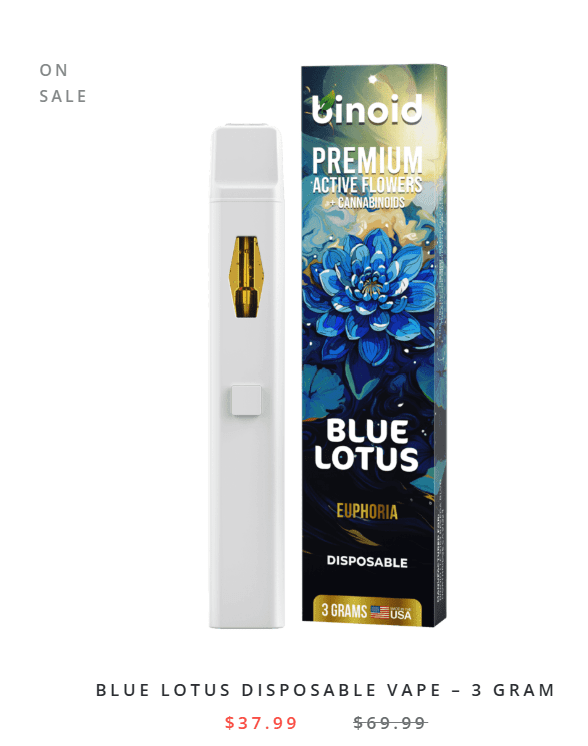
Contender #2: Blue Lotus
Transporting us from the modern laboratory to the sacred temples of the ancient world, our second contender, Blue Lotus, offers an experience rooted not in molecular chemistry but in millennia of spiritual and cultural reverence. Known to botanists as Nymphaea caerulea, this stunningly beautiful water lily was a cornerstone of ancient Egyptian society, symbolizing the very act of creation, the daily rebirth of the sun, and the pathway to the divine. Its delicate blue and gold petals graced the courts of pharaohs and the altars of priests, cherished for its ability to induce states of profound peace and heightened awareness.
The journey offered by Blue Lotus is fundamentally different from that of any cannabinoid; it is not a potent, euphoric “high,” but a gentle and subtle unfurling of the mind. It is a key to a serene and dreamy state, a tool for quieting the noise of the world and accessing a more tranquil, introspective consciousness. To partake in Blue Lotus is to connect with a timeless botanical tradition.
Blue Lotus, which is more accurately a type of water lily than a true lotus, derives its unique properties from a pair of primary alkaloids contained within its petals and stamens: apomorphine and nuciferine. These compounds interact with the human body in a way that is distinctly different from cannabinoids. Apomorphine is what is known as a non-selective dopamine agonist, which means that it activates dopamine receptors in the brain. This action is associated with its mood-lifting and calming effects. Nuciferine, on the other hand, is thought to have properties that contribute to a sense of tranquility and physical relaxation.
The synergistic dance between these two alkaloids is what produces the signature Blue Lotus experience: a gentle, dream-like psychoactivity that is both calming and subtly euphoric. It does not produce the intense perceptual shifts associated with THC, but rather fosters a state of peaceful, lucid awareness. Users often describe a pleasant sensation of warmth, a quieted mind free from racing thoughts, and a deeper connection to their immediate surroundings.
The story of Blue Lotus is an epic tale woven deeply into the golden tapestry of ancient Egyptian history. For thousands of years, this flower was far more than just a beautiful plant; it was a central pillar of Egyptian cosmology, religion, and social life. The flower’s unique behavior—opening its petals to the morning sun and closing them again at night to sink below the water—was seen as a powerful metaphor for the fundamental cycles of life, death, and rebirth. It was directly linked to the creation myth, wherein the sun god Ra was said to have first emerged from the heart of a blue lotus that blossomed from the primordial waters.
This divine association made it a ubiquitous symbol in Egyptian art, seen in countless tomb paintings, hieroglyphic carvings, and on decorative objects. Pharaohs and queens are depicted holding the flower to their noses, inhaling its sacred fragrance, which was believed to be a pathway to the divine. It was also famously infused into wine, creating a potent elixir that was consumed at festivals and religious ceremonies to induce states of blissful ecstasy and spiritual insight. With the decline of the Egyptian civilization, the esoteric knowledge of the Blue Lotus faded for centuries, only to be rediscovered in modern times by those captivated by its rich and mystical legacy.
The contemporary revival of Blue Lotus has seen it adapted into a diverse range of product forms, making this ancient botanical more accessible than ever before. While traditional preparations like teas and wine infusions are still popular among purists, modern manufacturing has introduced convenient and user-friendly formats that cater to a broader audience.
These innovative products capture the essence of the flower, allowing individuals to explore its calming properties in ways that seamlessly integrate with a modern lifestyle. This diversification has been instrumental in the flower’s resurgence, transforming it from a historical curiosity into a relevant and beloved part of the contemporary wellness and ethnobotanical landscape:
Dried Flower: This is the most authentic and versatile form, consisting of the dried whole flowers or just the petals and stamens. Users can brew the dried flower into a fragrant, calming tea, which is the most traditional method of consumption. It can also be ground and smoked or vaporized, either by itself or blended with other herbs, offering a more immediate onset of its gentle effects. This form appeals to those who enjoy a hands-on, ritualistic engagement with their botanicals.
Disposable Vapes: Leveraging the convenience of modern technology, Blue Lotus extract is now widely available in disposable vape pens. These sleek devices offer a smoke-free and highly discreet way to enjoy the flower’s properties. The extract is gently heated into an inhalable vapor, providing a rapid delivery of its calming alkaloids. These vapes are often enhanced with natural flavors and may be combined with other complementary botanical extracts.
Pre-Rolls: For individuals who enjoy the experience of smoking but prefer to skip the preparation, pre-rolls are the perfect solution. These are ready-made joints filled with ground Blue Lotus flower. Often, they are blended with other synergistic herbs like damiana, mugwort, or lavender to create a more complex aromatic profile and a more nuanced relaxing effect. They offer a simple, grab-and-go way to enjoy this ancient flower.
Gummies: One of the newest and most popular innovations, Blue Lotus gummies provide a tasty, precisely dosed, and smoke-free way to consume the flower’s extract. Each gummy contains a specific milligram amount of the active compounds, allowing for consistent and predictable experiences. Because the extract is absorbed through the digestive system, gummies have a slower onset but provide a longer-lasting period of gentle tranquility, making them ideal for sustained relaxation.
A fascinating development in the modern botanical market is the art of combining Blue Lotus extract with the diverse world of cannabinoids. This practice is rooted in the concept of synergy, where the unique properties of different plants can work together to create an experience that is greater than the sum of its parts. The serene, dopamine-related effects of Blue Lotus’s alkaloids can be skillfully paired with the cannabinoid system-targeting effects of compounds from the hemp plant. For example, blending Blue Lotus with non-psychoactive cannabinoids like CBD or CBN can create a powerful combination aimed at profound relaxation and physical ease.
When combined with a gentle psychoactive cannabinoid like Delta 8 THC, the result can be a uniquely blissful and dreamy state of mind that is both uplifting and deeply calming. For the more adventurous user, blends with potent cannabinoids like THCA Liquid Diamonds or THC-P aim to create a multi-layered and intensely profound journey, where the lucidity of Blue Lotus might serve as a grounding force for the powerful effects of the THC analogs. These thoughtful formulations are pushing the boundaries of customized botanical experiences.
The exploration of synergistic blends does not end with cannabinoids; Blue Lotus is also being thoughtfully combined with extracts from various mushrooms, another category of powerful natural agents. This trend is especially appealing to individuals interested in deepening their practices of meditation, introspection, and dream exploration. The most notable of these pairings is with extracts derived from the Amanita muscaria mushroom. While this iconic mushroom has a complex history, modern extracts are often processed to harness its calming and dream-inducing properties, which are attributed to the compound muscimol.
When the tranquil essence of Blue Lotus is combined with the oneirogenic (dream-enhancing) qualities of Amanita extract, the result is a potent blend designed for nighttime use. Users of these combinations often seek deep states of relaxation, heightened dream clarity and vividness, and a unique pathway for inner exploration, making this pairing a choice for the experienced ethnobotanical enthusiast.
The principle of creating harmonious blends extends to pairing Blue Lotus with a variety of other beneficial flowers and herbal extracts. Formulators often select botanicals with complementary properties or similar historical uses to craft a more holistic and well-rounded final product. This practice reflects a deep understanding of traditional herbalism. For instance, Blue Lotus is frequently combined with its botanical cousins, Pink Lotus (Nelumbo nucifera) or White Lotus (Nymphaea ambo).
These blends aim to offer a fuller spectrum of the calming and mood-lifting qualities associated with these revered water lilies. Another very common ingredient in Blue Lotus blends is Passionflower (Passiflora incarnata), an herb with a long history of use for promoting a sense of calm and relaxation. The addition of Passionflower can help to ground the ethereal, dreamy effects of the Blue Lotus, adding a deeper layer of physical tranquility that makes the blend exceptionally suitable for unwinding and achieving a state of peace.
In the United States, the legal framework surrounding Blue Lotus is remarkably simple and permissive, standing in stark contrast to the intricate and often contradictory laws governing cannabis and its derivatives. At the federal level, Blue Lotus (Nymphaea caerulea) is not classified as a controlled substance. This means that for the vast majority of the country, the plant, its extracts, and various consumer products containing it are perfectly legal to cultivate, possess, buy, and sell.
This lack of federal prohibition has allowed a flourishing and accessible market to emerge, with Blue Lotus products readily available through online retailers, specialty herb stores, and local smoke shops. There is, however, one very significant and well-known exception: the state of Louisiana. In Louisiana, the law specifically prohibits the cultivation, sale, and possession of Nymphaea caerulea if it is intended for human consumption. For residents outside of Louisiana, Blue Lotus can be enjoyed without legal fear, though it is always a prudent measure to be aware of any hyper-local ordinances that might exist.
The signature effects of Blue Lotus are celebrated for their subtlety, gentleness, and profoundly calming nature. The experience is not one of overwhelming intoxication but of a graceful transition into a more serene and peaceful state of being. It often begins with a soft wave of physical relaxation that seems to dissolve bodily tension, which is frequently described as a pleasant warmth or feeling of lightness. Mentally, its most prized attribute is its ability to quiet the “monkey mind”—the endless stream of internal chatter and anxious thoughts. This quieting effect leads to a state of calm clarity and peaceful awareness, making it an exceptional aid for mindfulness.
While it is certainly psychoactive, it does not typically distort reality or impair cognitive function. Instead, users report a mild and pleasant euphoria, a dreamy quality to their thoughts, and a subtle enhancement of their sensory perception. This unique profile makes it a favored companion for activities like meditation, yoga, creative pursuits, or simply quiet reflection. Furthermore, its well-documented ability to enhance the vividness and lucidity of dreams makes it a popular botanical to consume before sleep.
Pros & Cons
To fully appreciate the unique position Blue Lotus holds in the world of botanicals, one must consider both its celebrated strengths and its inherent limitations. Its appeal is ancient and deep, tied to a promise of gentle tranquility and spiritual connection. Yet, as with any substance that alters consciousness, a balanced perspective is crucial. Examining the pros and cons allows a prospective user to align their expectations with reality and to make a choice that is both informed and intentional, ensuring their journey with this sacred flower is a positive one.
Pros:
Gentle and Manageable Effects: The foremost advantage of Blue Lotus lies in the subtle and non-overwhelming nature of its psychoactive experience. It ushers in a state of calm and mild euphoria without the intensity or potential for paranoia that can accompany more potent substances. This makes it an ideal choice for those new to psychoactive botanicals or for anyone seeking a gentle aid for relaxation that won’t be incapacitating.
Broadly Legal and Accessible: Outside of Louisiana, Blue Lotus enjoys a legal status that makes it incredibly easy to obtain. It is not federally regulated as a controlled substance, allowing it to be sold openly by a wide range of online and retail vendors. This accessibility removes the legal risks and complexities associated with navigating the patchwork of state-by-state cannabinoid laws.
Rich Historical and Spiritual Significance: Using Blue Lotus is an act of participating in a tradition that spans millennia. Its deep and profound connection to ancient Egyptian spirituality, where it was revered as a symbol of creation and a key to the divine, adds a layer of meaning and reverence to the experience that is unmatched by modern products. This historical weight can transform its use from simple consumption into a mindful ritual.
Excellent for Meditation and Mindfulness: The mind-quieting properties of Blue Lotus make it a superb tool for enhancing meditation, yoga, or any practice that requires a calm and focused state. By helping to mute the internal monologue and reduce mental clutter, it can allow users to achieve deeper states of presence and introspection.
Potential for Vivid and Lucid Dreaming: One of the most unique and sought-after benefits of Blue Lotus is its reported effect on the dream state. Many users find that consuming it before sleep leads to dreams that are more colorful, memorable, and easier to consciously navigate (lucid dreaming). This makes it a fascinating tool for those interested in exploring their subconscious mind.
Versatile Consumption Methods: Blue Lotus offers a wide array of consumption options to fit any preference. From the traditional ritual of brewing a tea to the modern convenience of a disposable vape or a tasty gummy, users can choose the method that best suits their lifestyle. This flexibility ensures that anyone can find a comfortable way to experience its benefits.
Synergistic Blending Potential: The gentle nature of Blue Lotus makes it an excellent complementary ingredient in herbal blends. It pairs beautifully with other calming botanicals like passionflower, as well as with various cannabinoids and mushroom extracts, allowing for the creation of complex and tailored experiential profiles.
Generally Clear-Headed and Non-Impairing: While it induces a dream-like state, Blue Lotus does not typically cause the cognitive impairment associated with many other substances. Users often report feeling relaxed yet clear-headed and fully functional, allowing them to enjoy a tranquil state without sacrificing their mental acuity.
Cons:
Subtle Effects May Disappoint Some: For those accustomed to the potent and unmistakable effects of THC, the subtlety of Blue Lotus can be underwhelming. Its influence is gentle and requires a certain degree of mindfulness to fully perceive and appreciate. Users seeking a strong, recreational “high” will likely find it lacking in intensity.
Lack of Modern Scientific Research: Despite its thousands of years of historical use, Blue Lotus has been the subject of very little modern clinical research. There is a scarcity of scientific data on its long-term effects, precise mechanisms of action, and potential interactions with medications. Users must proceed based on anecdotal evidence and traditional knowledge.
Unregulated Market Leads to Quality Variance: The market for Blue Lotus products is largely unregulated by any government body. This can lead to significant inconsistencies in the quality, potency, and purity of products from different vendors. It is incumbent upon the consumer to find reputable sources that provide lab testing to ensure their products are clean and accurately labeled.
Illegal in Louisiana: The specific prohibition on Blue Lotus for human consumption in the state of Louisiana is a major drawback for residents there. It also serves as a reminder that even for federally legal substances, state laws can create exceptions, and it is always important to be aware of local regulations.
How to Go About Choosing Which Option
Embarking on a journey with either Delta 8 THC flower or Blue Lotus is to choose a specific destination for your consciousness. The decision rests not on which botanical is “better,” but on which experience is better suited to your immediate intentions. These two options represent fundamentally different philosophies of altering one’s state of being. One is a product of scientific refinement, engineered to deliver a predictable and functional euphoria.
The other is an artifact of ancient spirituality, offering a subtle and introspective path to tranquility. To make your choice, you must first ask yourself what you are seeking: a clear and blissful buzz to enhance your day, or a gentle, dream-like calm to soothe your soul? Your honest answer to this question will illuminate the correct path forward.
|
Feature |
Delta 8 THC Flower |
Blue Lotus |
|---|---|---|
|
Nature of Product |
Infused Product (Hemp flower coated with Delta 8 distillate) |
Natural Product (Dried petals and flowers of the plant) |
|
Primary Active Compounds |
Delta-8-Tetrahydrocannabinol (a cannabinoid) |
Apomorphine & Nuciferine (alkaloids) |
|
Typical Experience |
Clear-headed, functional euphoria; noticeable body relaxation; a mild “high” |
Gentle, calming, dreamy, lucid, tranquil; a subtle shift in consciousness |
|
Cultural History |
A very recent product of the modern, post-2018 Farm Bill hemp industry |
An ancient, sacred botanical with over 3,000 years of spiritual use in Egypt |
|
Legal Status (U.S.) |
Contentious; Federally legal under Farm Bill, but banned in many states |
Federally legal and unregulated in most states, except Louisiana |
|
Best Suited For… |
Recreational use, social settings, functional relaxation, users seeking a mild THC effect |
Meditation, quiet reflection, enhancing creativity, dream exploration, gentle unwinding |
Ultimately, the right choice is the one that aligns with your desired state of mind, so…
Choose Delta 8 THC Flower if: You are looking for a gentle but definite psychoactive experience that is similar to traditional cannabis. It is the ideal choice if you want a functional, clear-headed buzz that allows you to remain social and engaged while enjoying a state of blissful relaxation. If you appreciate the ritual of smoking cannabis flower and want to explore different strain profiles but find traditional Delta 9 THC to be too intense, Delta 8 flower offers the perfect compromise. It’s a modern solution for a modern desire: a manageable, legal-in-many-places high.
Choose Blue Lotus if: Your goal is tranquility, introspection, and a subtle escape from the noise of your own mind. It is the superior option if you are seeking a botanical aid for meditation, mindfulness practices, or creative pursuits that benefit from a calm and open mental state. If you are sensitive to THC or actively wish to avoid a traditional “high” in favor of a more ethereal, dream-like experience, Blue Lotus will meet your needs beautifully. It is a choice for the spiritual explorer, the dreamer, and anyone who feels a connection to the ancient, sacred traditions of the botanical world.
The Alchemist and the Pharaoh: A Choice of Essence
The final decision between Delta 8 THC flower and Blue Lotus is a choice between two distinct forms of magic: the precise magic of the modern alchemist and the ancient magic of the pharaoh’s priest. One carefully rearranges molecules in a lab to craft a specific, reliable state of functional bliss. The other humbly gathers petals that have held the same sacred essence for millennia, offering a key to a world of serene and timeless peace.
There is no right or wrong answer, only an honest one. Your selection reflects the kind of experience your spirit is currently seeking—a clear, bright uplift or a deep, quiet calm. Trust your intuition, and then let the chosen flower guide you toward the state of being you wish to explore.

